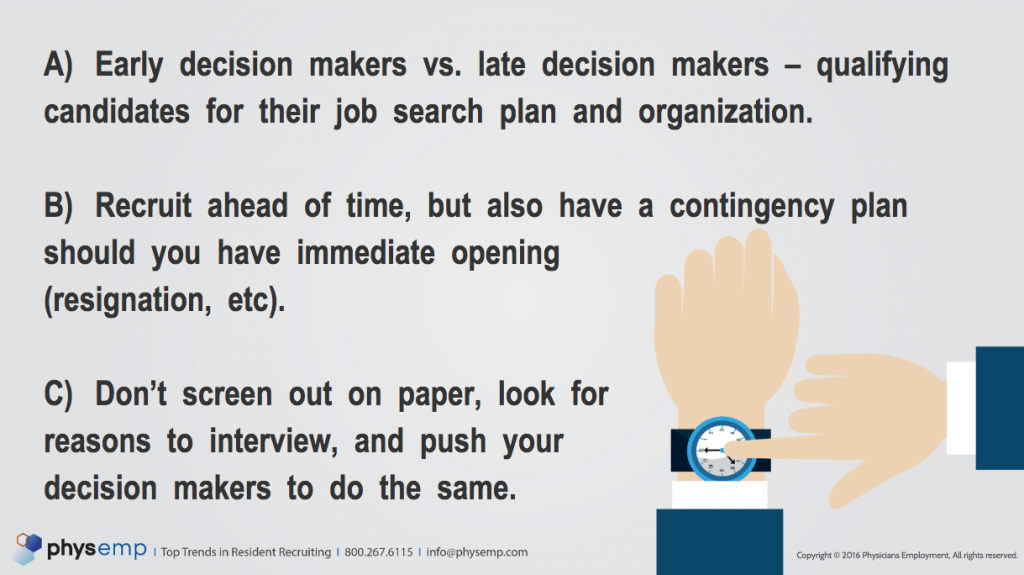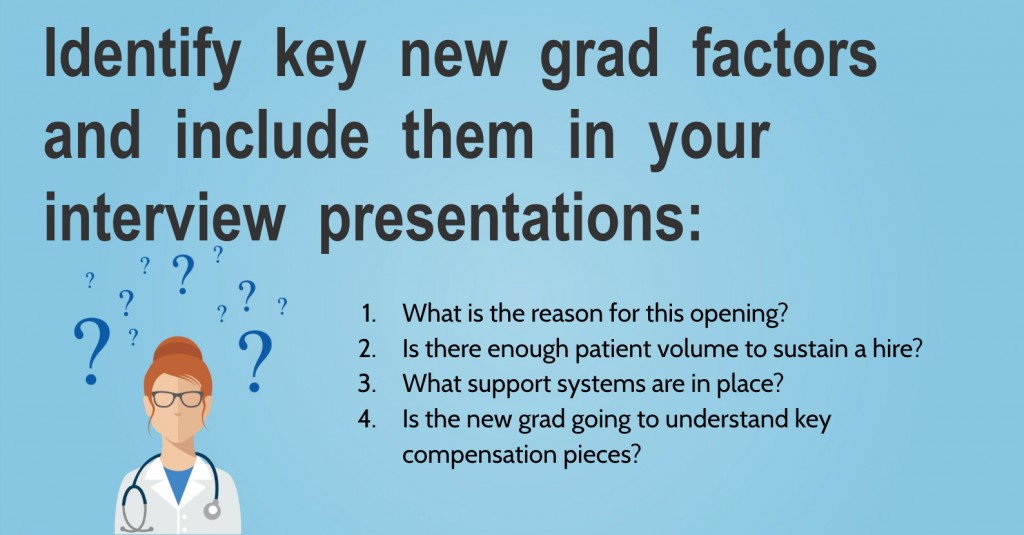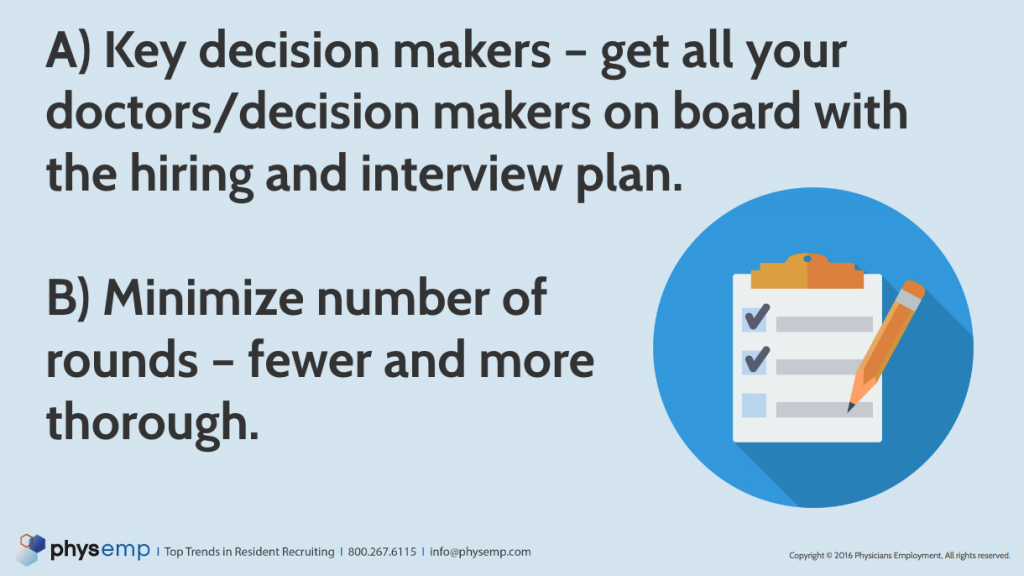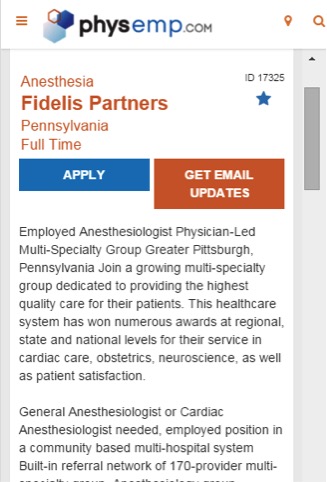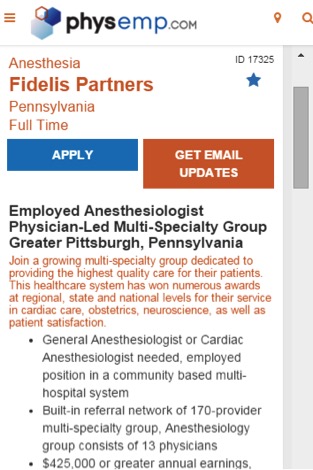Top 10 Mistakes in Physician Recruiting
As a physician recruiter, you well know how competitive the field can be, especially nowadays, given the nation’s continuing shortage of doctors. To ensure your success in 2021 and beyond, be aware of the following common recruiting pitfalls so that you can work to avoid them.
1. Too narrow a strategy
If your recruiting strategy focuses on only one main channel of research or outreach, consider broadening it to include other channels. You might be doing pretty well as is, but there may be other valuable avenues to explore that could yield greater results. A strategic multi-platform recruiting campaign could include a stronger online advertising presence, more timely social media posts, increased attendance at job fairs, and more email marketing, print advertising, and outreach through online databases or profiles.
2. Too lengthy a hiring process
Physician recruiting often takes a long time before placement, so it’s important to not draw things out any longer than is warranted. Are you quick to respond and follow through on messages to and from candidates? Do you offer answers and requested info quickly? Don’t inadvertently show a lack of interest by being too casual or you may lose that perfect candidate.
3. A limited, one-size-fits-all approach
Hiring a family practice physician, for example, is an entirely different undertaking than hiring, say, a neurosurgeon. Before you reach out to a potential candidate, take time to become an expert in their field, going beyond the low-hanging-fruit data such as average salary. Get to know the challenges, rewards, and concerns that these professionals face. That will make you better able to communicate with them, and to tailor your outreach in ways that resonate strongly.
4. Lackluster Job Postings
Let’s face it, if you’re not fully invested in creating the highest quality job posts, prospective physician candidates won’t be fully invested in you either. The more detail you can provide, the more effective your ads will be. Always include the city, salary, company perks, community appeal, and other details in your ads. Be as specific as possible (especially with location), which will increase your chances of success.
5. Complicated or Buggy Online Application
Have you made it easy for prospective candidates to apply for your job? Are your online forms well presented or are there glitches that make it easy to lose people along the way? Many candidates will abandon an application if there are problems, errors, or, say, if you ask for a CV upfront and then require the candidate to enter the exact same information in a form. Troubleshoot your forms to ensure that candidates can apply with ease.
6. Too passive a recruiting style
Are you guilty of the “post-and-pray” approach? That’s where you post your open jobs on PhysEmp or another site and expect an avalanche of resumes to come rolling in. While ads are an important part of a physician recruiting campaign, they shouldn’t be your only tactic. You want to have both passive and active tactics. Physician databases, for instance, allow you to proactively search for and reach out to candidates.
7. Ignoring Your Gut Instinct
Everyone’s been there: The candidate looks perfect for your opportunity, but he or she has mentioned that the spouse is attached to their current community and their daughter was just elected senior class president. Those are the kinds of significant indicators that tell you that your candidate may decide to stay put. If you get a sinking feeling that he or she might back out at the last minute due to personal reasons, you may very well be right. Don’t ignore your intuition, especially if it’s insistent.
8. Too Many Cooks in the Kitchen
Just as it’s true that too many cooks can spoil a soup, too many parties involved in the hiring process can spoil a nice hiring opportunity. Naturally, it’s crucial to include key stakeholders in the interviewing process, but it’s equally important to keep things streamlined. It can be challenging to have multiple parties making a decision based on everyone’s preferences. Obviously, there’s a lot more at stake in physician recruiting, but you should still try to ensure that the interviews are held by key decision-makers only.
9. Not Being Candidate-Centric
Recruiters often reach out to candidates with language that can best sell their opportunity. That’s ideal. You want to pique the candidate’s interest. One of the ways you can do that is by making sure that the opportunity is fully focused on the candidate. It’s a subtle shift. Instead of saying “We’re looking for” and “Our hospital or clinic offers,” work in statements such as, “If you’re the kind of candidate who…” or “I think you’ll really like the fact that we have…” Linguistically, bring the physician “into the hospital” to get one step closer to literally bringing them there.
10. Not Recognizing Your Strengths
Each year, do you make assessments to review what worked well for you in terms of your recruiting effort as well as what was less effective? Though this can feel like nonproductive busy-work, it can be tremendously helpful in refining your strategy. If you’ve been spending 20% of your recruiting hours doing something that hasn’t paid off, perhaps it’s time to understand the reason why, then redirect those hours elsewhere, where they can yield better results.
Ready to start connecting with physicians? Have questions? Contact PhysEmp today for a free demo.

 Writing ads to advertise your open physician jobs is a fine art. You only have a few seconds to catch a physician candidate’s attention because, let’s face it, doctors tend to search for jobs on the go. So, what’s the key to ensure that you pique their curiosity?
Writing ads to advertise your open physician jobs is a fine art. You only have a few seconds to catch a physician candidate’s attention because, let’s face it, doctors tend to search for jobs on the go. So, what’s the key to ensure that you pique their curiosity?